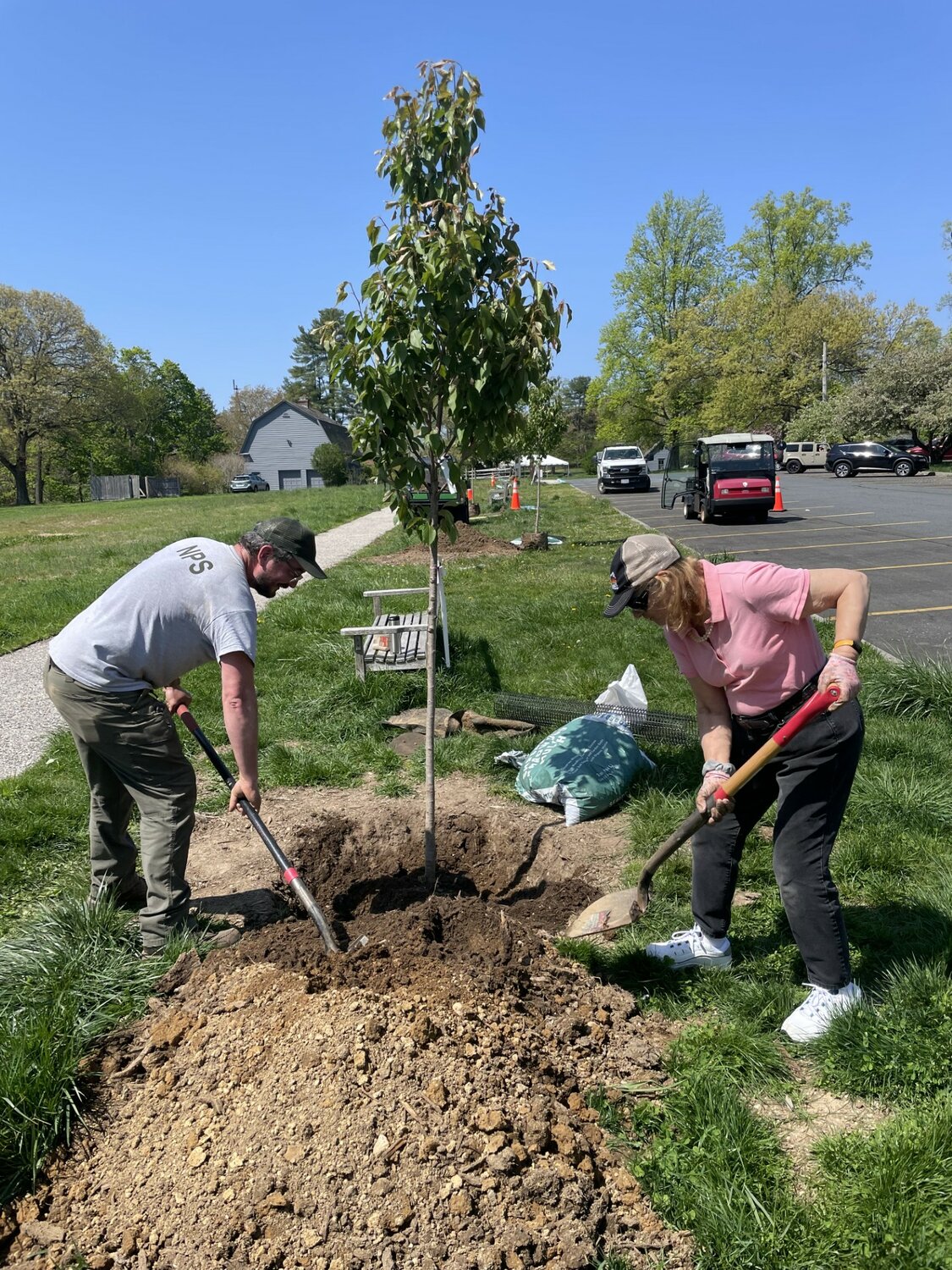New cherry trees arrive at Sagamore Hill
Sagamore Hill National Historic Site has planted six new Kwanzan cherry trees in the park as part of an ongoing tree replanting project. These trees were sourced from non-profit Casey Trees in Washington, D.C., and are historically connected to the cherry trees of Washington D.C.’s National Mall.
In 1957, Sagamore Hill received a gift of cherry saplings from Japan to honor President Theodore Roosevelt’s work in brokering peace during the Russo-Japanese War over 50 years prior. These trees were direct genetic descendants of the 3,020 cherry trees gifted by the Empire of Japan to the United States in 1912, which were originally planted on the National Mall.
The newly planted trees traveled 324 miles from Berryville, Virginia, to Oyster Bay, replacing cherry trees that were removed earlier in 2023 due to age-related deterioration. The replacement trees are part of the same stock used to plant new trees at the National Mall and Potomac Tidal Basin in D.C., home of the National Cherry Blossom Festival.
Keva
n Keegan, Sagamore Hill’s chief of preservation and maintenance, said he was excited about the new additions. He added that one of the goals of Sagamore Hill and other national parks was to preserve the “cultural landscape” of the site, making sure that the location looks exactly like it would have when Roosevelt was living there.
“One of the reasons why we use the Kwanzan cherry trees in the parking lot from the beginning was to create a separation from the parking lot to the cultural landscape of Sagamore Hill,” Keegan said. “So basically what we did historically is we used these Kwanzan cherry trees to create a hidden effect, so when you’re outside the parking lot you don’t see the parking lot, but your eyes are drawn to the ornamental trees and the natural beauty of the area.”
The tree planting took place adjacent to the parking lot and included participation from the Theodore Roosevelt Legacy Partnership, Casey Trees, and National Park Service staff. Keegan explained the importance of continuing to maintain the historic orchard at Sagamore Hill, adding that additional tree plantings, including new apple trees, are underway and will continue throughout 2024.
Although some of the trees are not native to Long Island, Keegan stressed the important balance of preserving the cultural landscape while also prioritizing environmental sustainability.
“As long as the trees aren’t invasive and damaging to other plants and the ecological system, we will just let them live their lives and then when they’re at the end of their cycle their removed from their locations,” Keegan said. “We then just won’t plant anything back there or we’ll plant the right kind of tree there instead.”
The park’s efforts to maintain historical landscapes include a meticulous replanting of trees. Keegan noted that the park replants species that match the historic orchard’s original variety, such as Baldwin and smokehouse apple trees. In addition, two black locust trees will be planted on the east side of the parking lot.
Sagamore Hill will also plant four trees in the corners of the Roosevelt House, including a copper beech, silver maple, and other species, which were initially planted by President Roosevelt himself to provide shade.
Keegan said that the planting of these Kwanzan cherry trees represents a continuation of the park’s commitment to preserving history and nature. The cherry trees are expected to bloom within a few years, showcasing their vibrant blossoms and adding beauty to the historic site.
“I think the biggest thing we want to emphasize is the importance of life cycles within nature, and just because something is at the end, usually within nature that means that it’s at the beginning of something else,” Keegan said. “So what I look forward to is being able to see the lifecycle of these trees from a young age to a mature age within my lifetime.”
For now, park visitors can appreciate the trees as they grow, knowing that their addition helps preserve the legacy of Sagamore Hill and the vision of Theodore Roosevelt.






